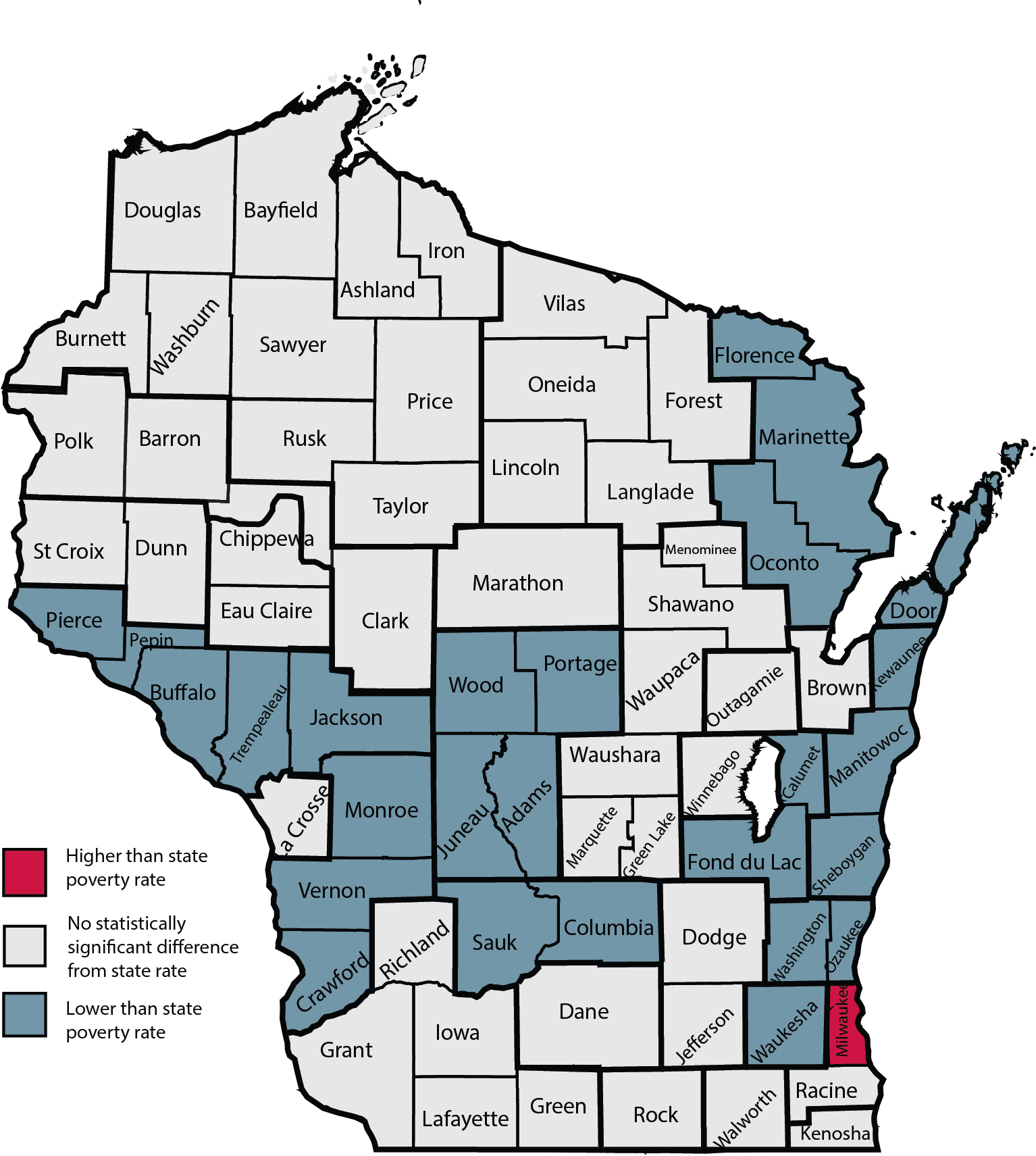CONTACT: Timothy Smeeding, smeeding@lafollette.wisc.edu, (608) 890-1317
MADISON—The Tenth Annual Wisconsin Poverty Report released today found the Wisconsin poverty rate increased to 10.8 percent in 2016, compared to 9.7 percent in 2015, as measured by the Wisconsin Poverty Measure (WPM). The significant rise came despite the state’s jobs growth during the period. The official poverty rate for Wisconsin also increased, from 10.8 to 11.8 percent.
The annual study led by Timothy Smeeding, Lee Rainwater Distinguished Professor of Public Affairs at the La Follette School of Public Affairs and Affiliate and former Director of the Institute for Research on Poverty (IRP) at the University of Wisconsin–Madison, in collaboration with IRP programmer analyst Katherine Thornton, found poverty rates rose for children and elders as well.
WPM child poverty increased by 2 percentage points, to 12.0 percent, while the official poverty rate for children rose from 15.4 to 16.9 percent. WPM elderly poverty rose from 7.8 to 9.0 percent between 2015 and 2016; the official poverty rate for elders grew from 6.2 to 6.6 percent.

Source: Authors’ tabulations of 2016 American Community Survey data.
As explained in the report, the WPM child poverty rate is almost 5 percentage points lower than the official child poverty rate because the WPM counts as income family resources from tax credits and noncash benefits (such as Supplemental Nutrition Assistance Program or SNAP food assistance, called FoodShare in Wisconsin, as well as the Child Tax Credit and Earned Income Tax Credit), which the official poverty measure does not.
In contrast, WPM elderly poverty is about 36 percent higher than the official rate (6.6 percent versus 9.0 percent). This difference results mostly from the WPM’s inclusion of out-of-pocket medical costs, which are not included in the official poverty rate.
For child poverty, the comparison between the two measures provides striking evidence that public programs such as SNAP significantly reduce economic disadvantage for many Wisconsin families with children. However, the report notes that changes in SNAP participation reduced its antipoverty effects in 2016 compared to earlier years of the study.
In addition, unlike the official poverty measure, the WPM takes childcare and work-related expenses for families with children into account. Such expenses partially offset antipoverty effects of increases in market income through earnings.
The WPM also allows researchers to analyze poverty across regions within the state (see map below), which reveals the report’s bright side: 26 counties have WPM poverty rates below the 10.8 percent state average, which is the highest proportion since the report began in 2008.
Brad Paul, Executive Director of the Wisconsin Community Action Program Association (WISCAP), which supports the Wisconsin Poverty Report, commented, “IRP’s annual study reveals the rugged persistence of poverty in our state. It is particularly concerning to see increases among children and the elderly and these findings point to both the need for comprehensive public policy solutions and a broad commitment from Wisconsinites to fight poverty. No family or individual should struggle to meet their basic needs when our collective wealth is so great.”
IRP Director Lawrence Berger notes, “I am proud that the ongoing Wisconsin Poverty Project has its home at IRP. This year, we learn that the state’s economic expansion is leaving some low-income families behind, which is concerning. At the same time, the much lower WPM child poverty rate compared to the official rate emphasizes the important ongoing role of social welfare programs, indicating that tax credits and FoodShare are providing crucial resources for families who would otherwise be poor.”
###
—Deborah Johnson, deborah.johnson@wisc.edu, (608) 262-7779